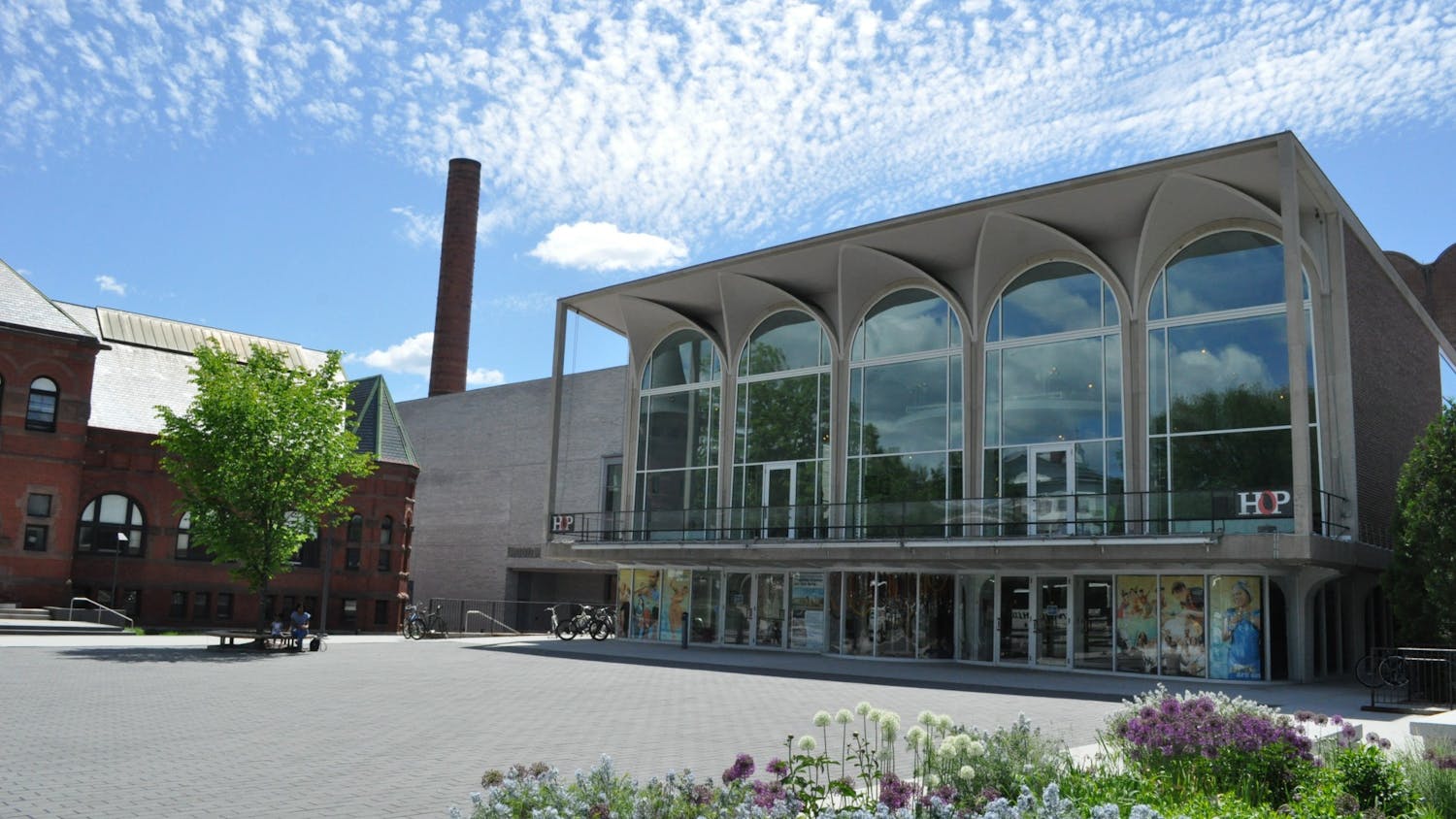Grupo de Rua, Beltrao's all-male dance company from Brazil, prompted its audience to reconsider the meaning of hip-hop at the Hopkins Center on Thursday and Friday, with its U.S. premiere of the 2008 piece. In "H3," Rio de Janeiro-native Beltrao and his young dancers explored the merger of hip-hop and contemporary dance set to a variety of music and sounds, ranging from electronica melodies to raw percussive beats and even silence.
"[Beltrao] is expanding the vocabulary [of hip-hop dance]," professor Ford Evans, director of the Dartmouth Dance Ensemble, said in an interview with The Dartmouth. "However he is deviating from hip-hop, it's in a personal way. His dancers have that vernacular in their bodies but are using it to generate new ideas, new emotions and new ways to move with that particular dance discipline."
The nine dancers, all also from the areas surrounding Rio de Janeiro, use classic street dancing and gritty hip-hop moves while incorporating another type of dance skill. Coined "an abstract new spin on hip-hop dance" by the Hop, "H3" displays Beltrao's personal history of hip-hop dancing on the streets of Brazil combined with his intellectual respect of and interest in contemporary dance techniques.
Grupo de Rua, which translates into English as "Street Group," was formed by Beltrao in 1996 when he was 16 years old. After enrolling in the dance program at Rio de Janeiro's Centro Universitario da Cidade in 2000, Beltrao became drawn to more contemporary movements and started using these to enhance the hip-hop techniques to which he was accustomed, resulting in a new genre.
"The reason that the Hop and so many other dance presenters have been excited is that we're always looking for how the arts absorb new forms and say new things," Rebecca Bailey, publicity coordinator for the Hop, said in an interview with The Dartmouth. "Grupo de Rua's work is definitely doing both those things."
Grupo de Rua began to draw international critical acclaim in 2002 when it started touring and performing at dance festivals across the world. Margaret Lawrence, the programming director for the Hop, first saw the group live at a festival in Montreal about a year and a half ago.
"They were just riveting and phenomenal," Lawrence said in an interview with The Dartmouth. "I couldn't get it out of my head. Really remarkable and original."
Beyond the group's innovative movements, the soundtrack in "H3" could also be called "remarkable." According to Evans, by using jazz and electronic music, Grupo de Rua has strayed from typical American hip-hop performances that choose tracks with heavy beats. With the audience's focus shifted away from the pounding rhythm of the music, the language of the moving bodies takes center stage. The first segment of the show, which featured only the occasional city sound on a background of silence, helped prove this hypothesis.
According to Evans, the dancers' bodies communicate a range of stories and information. He describes Beltrao as creating a "fight club with hip-hop." Indeed, the performance builds drama and action, establishes relationships and statuses, and conjures the feeling of watching kids make up dances on a street corner. This contrasts with typical hip-hop in that the stories told by the dancers are often separate from the sounds that back them.
"It's not presentational, as hip-hop is in our culture," Evans said. "It's not driven by the music, it's not driven by the lyrics in the music. It's about what the body is saying to another body."
Beltrao echoed this sentiment in an interview with The Dartmouth.
"This is a really clear objective: we want to learn to better move in the space and to better explore the space," he said. "Another thing that is really clear is the necessity of learning how to dance together ... [In past collaborations] we didn't know how to approach each other we were always doing everything separate."
The increased focus on the dancers' bodies also highlights the sheer physical capabilities of the performers even more so than traditional hip-hop. The performance featured hyper-controlled popping and locking that seemed more impressive than the typically fast-paced, disconnected movements that we have come to expect from the genre.
The dance also featured typical spins and inversions, made more impressive by the manner in which the performers linked them to the fluid, modern moves that preceded them.
"Whether or not you are expecting traditional hip-hop, what comes through is how stunning these dancers are," Lawrence said. "The physical virtuosity is so strong."
Contrary to many traditional dance pieces, much of "H3" came out of improvisation, perhaps in a tribute to Beltrao and his dancers' street roots. During collaborative rehearsals, the dancers came up with the images that would comprise the major motifs of the piece. According to Beltrao, many of the most important movements (as evidenced by their repetition throughout the performance) were accidental ones that he saw his dancers playing with during the process of choreographing.
"My main function in this group is to know how to select things," Beltrao said during the post-performance discussion on Thursday. "We have a huge database of improvisation."
This was the first stop on Grupo de Rua's United States tour of "H3." Both performances were followed by discussions with the company members, led by Evans. A beginner-level dance master class had been scheduled on Wednesday, but due to the group's delayed arrival to the United States, this class was canceled.




